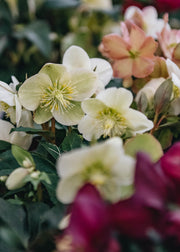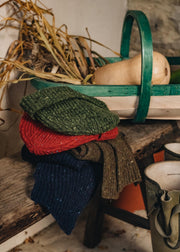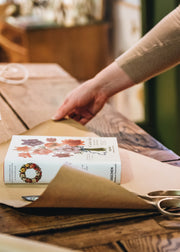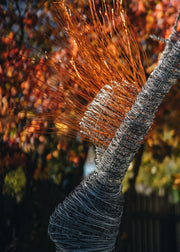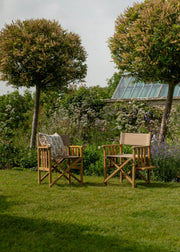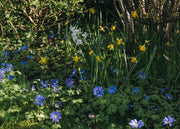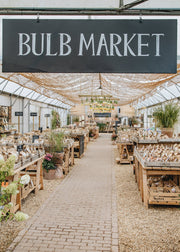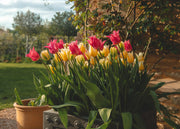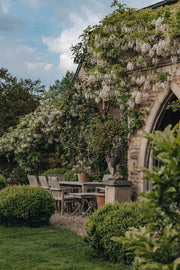Planting Bulbs for Extended Spring Colour
With such an array of spring bulbs to choose from, it’s easy to imagine that they will all bloom at the same time. The reality is that with a little consideration, you can plant for successional blooming, fully extending ‘spring’ from winter until summer. This 'bulb diary’ will enable you to plan your garden effectively and ensure continuous interest throughout the season.


Spring bulbs should be planted in the autumn, before the first frosts arrive and the ground becomes too hard to work. These plants begin to emerge at the end of winter, bringing a welcome burst of colour to the barren landscape.
The appearance of the first snowdrop is a highly anticipated sign of the changing season, offering a joyful reminder that spring is on its way. With its pure white petals and delicate, nodding head, snowdrops will naturalise over time, eventually forming a beautiful blanket of flowers. For a noticeable display, start by planting at least ten bulbs. Another early riser is the winter flowering Cyclamen coum, which is frost resistant, offering bright colour during the coldest months. It is ideal for woodland edges where it can naturalise under trees. The golden Winter Aconite (Eranthis cilicica) also thrives in woodland conditions and flowers over a long period, offering a vital early food source for the emerging bees and other pollinators. Its bright colour and buttercup like flowers bring a real ray of sunshine to the cold soil, as do the early flowering daffodils, which offer a similar burst of welcome yellow.
February flowerers
Early March sees the emergence of the crocus, another useful plant for creating a wonderful carpet of colour of rich yellows or vibrant blues, which provide an early food source for emerging bumblebees. Their pollen-rich stamens are not only nourishing, but their flowers also serve as shelter - bees have even been spotted sleeping inside, safely tucked in as the petals close at night. There are also autumn flowering crocus species, such as the saffron producing Crocus sativus, which flowers from September to November. Both spring and autumn flowering crocus bulbs can be planted in autumn. Later in March we see the emergence of the little grape hyacinths (Muscari), bright blue beauties that bring a burst of colour to early spring gardens or containers. While the classic cobalt blue is always striking, consider exploring cooler shades like soft lilac or white for a fresh twist. One of the first species of Iris to bloom in early spring is the Iris reticulata. From jewel colours reminiscent of an Old Masters painting to pale and interesting, you can fill the garden with these sculptural gems. The wild tulip is also set to bloom now, bearing a lemon scent to match its golden colouring.
March bloomers
Spring bulbs are now at their peak, bringing the garden to life with Narcissi, Bluebells, Camassia, and Tulips. Narcissi, ranging from single to double and bell-shaped blooms, are a spring staple, offering warm yellow hues and a strong fragrance. As part of the Narcissus genus (which includes daffodils and jonquils), there's a wide variety to choose from, including tender types like Indoor Narcissus Erlicheer, which can be planted in September for Christmas blooms. Bluebells impress with their carpets of blue, while fragrant Hyacinths add both scent and colour. Indoor varieties like Delft Blue can also be forced for winter flowering. Camassias, though lesser known, look stunning when naturalised among grasses. Tulips, a spring favourite, come in endless colours and forms. For best results, plant them in mid-October—after the soil has cooled but before it freezes. Tulips need a cold dormant period to bloom well; planting too early can lead to fungal issues or weak growth. Flowering times for tulips will vary by variety, location, and weather.
Late spring choices
As the season progresses, the alliums begin to emerge. These giant ornamental onions add architectural interest and a touch of drama to any planting scheme. Plant the bulbs in autumn and don’t be alarmed by the size difference; some allium bulbs are naturally much larger than others. Group them for best effect, and they’ll reward you with bold, long-lasting blooms. The bearded iris also flowers at this time, alongside the colourful ranunculus, which makes a wonderful cut or dried flower. Their tiny bulbs can benefit from soaking for a few hours before planting. The last of the late tulips will also bloom now.
As the weather warms and spring turns into summer, the vibrancy of borders is not so dependent on bulbs for colour and interest, as herbaceous perennial plants start to shine. In a month or so the process will start again, and you can plan the spring border for the following year!
Please note that bulbs are toxic to pets or humans if ingested and may cause skin allergy, so always wear gloves when handling.



